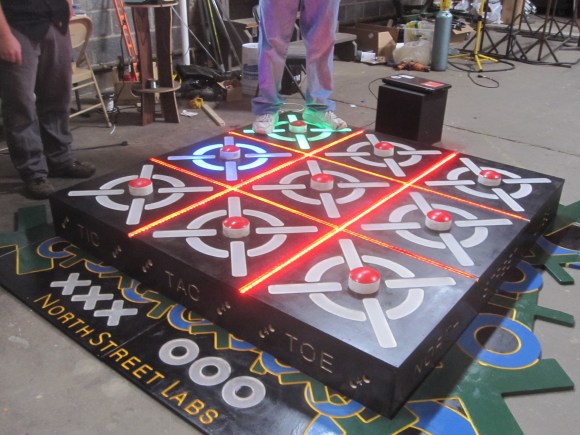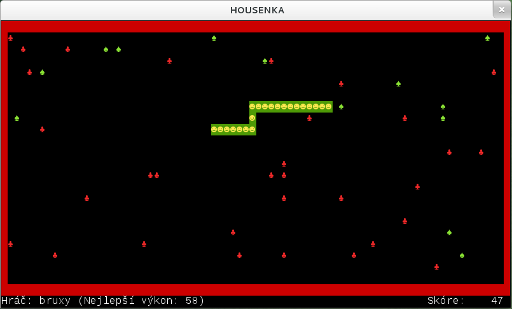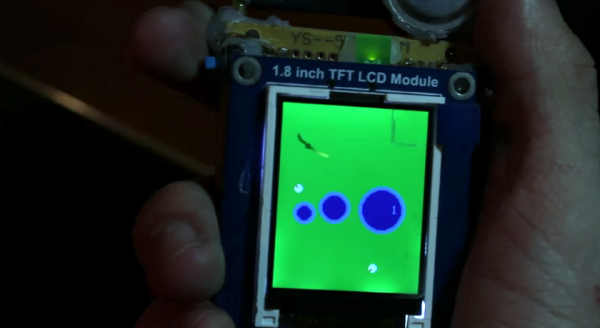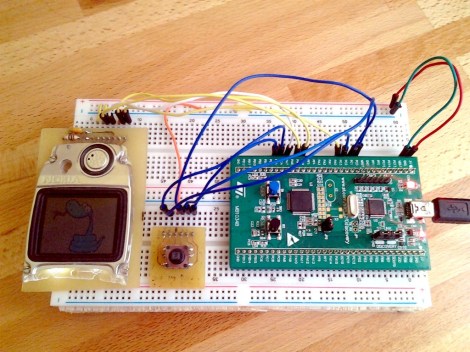
The team at North Street Labs really went all out with this Tic-Tack-Toe stomp box. At its most basic it’s a blinky version of the simple two-player game. But there’s always some added appeal when you make large manifestations of normally small items; the 10x Arduino is a good example of this.
The project is NSL’s qualifying entry for this year’s Red Bull Creation Contest (has it already been a year since the last contest?). A special Arduino shield was produced once again, this time it features hardware necessary to control LED strips… a lot of them. That led to the creation of this box, which houses a ton of strip sections inside to light the grid based on tapping one of the red buttons with your foot. We’d image the game would be seldom used at your hackerspace, but they take it to show off at the local children’s museum and it’s a huge hit with the kids!
















